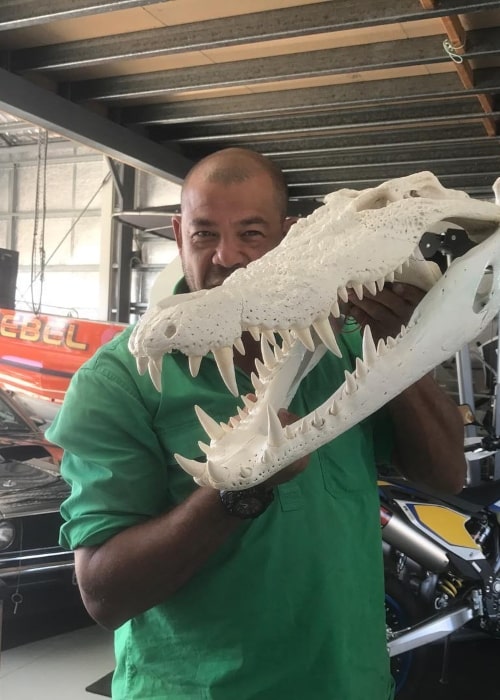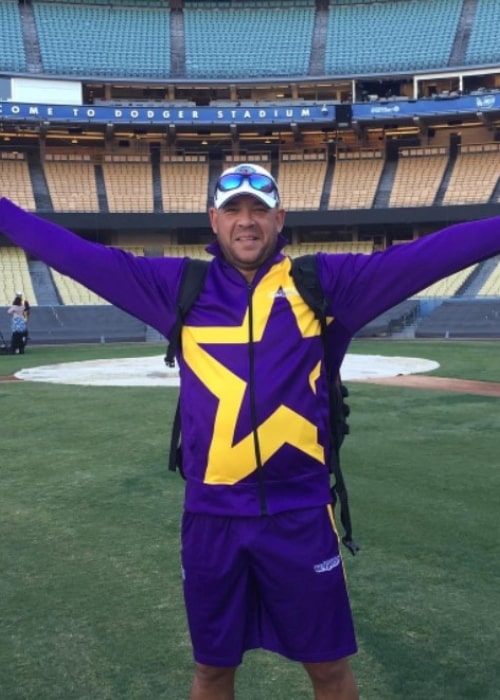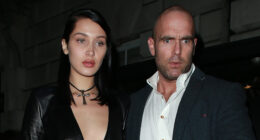| Andrew Symonds Quick Info | |
|---|---|
| Height | 6 ft 2 in |
| Weight | 94 kg |
| Date of Birth | June 9, 1975 |
| Zodiac Sign | Gemini |
| Eye Color | Green |
Andrew Symonds was an Australian cricket commentator, analyst, and former professional cricketer who had represented his country in 26 Test matches, 198 ODIs, and 14 T20Is, between November 1998 and May 2009, as an all-rounder. A key component of Australia’s world-beating ODI outfit in the early and mid-2000s, he was an integral member of the Australian squads that had won the ICC Cricket World Cup in both 2003 and 2007, as well as the ICC Champions Trophy in 2006. His international career began unraveling in mid-2008 when he spent significant time out of the Australian team due to disciplinary reasons. In June 2009, he was sent home from the ICC World Twenty20 event in England. This was his 3rd suspension/expulsion/exclusion from Australian selection in about 11 months. He did not play another international match for Australia after this and eventually retired from all forms of cricket in February 2012. After retirement, he had dabbled in cricket commentary and analysis sporadically, mostly in the BBL (Big Bash League) in Australia.
Born Name
Andrew Symonds
Nick Name
Roy, Symo

Age
Andrew Symonds was born on June 9, 1975.
Died
He died on May 14, 2022, in a single-vehicle car crash about 31 miles outside Townsville, Queensland, Australia. He was 46 years old at the time of his death.
Sun Sign
Gemini
Born Place
Birmingham, Warwickshire, England, United Kingdom
Nationality
![]()
![]()
Education
Andrew had attended the All Souls St. Gabriels School in Richmond Hill, Charters Towers, Queensland. He had later studied at the All Saints Anglican School, a private, co-educational school in Merrimac, Gold Coast, Queensland.
Occupation
Cricket Commentator, Analyst, Professional Cricketer (Retired)

Family
- Others – Ken Symonds (Adoptive Father), Barbara Symonds (Adoptive Mother), Louise Symonds (Adoptive Sister). He had 2 other adoptive siblings.
Batting
Right-Handed
Bowling
Right-Arm Medium, Right-Arm Off-Break
READ RELATED: Superstar DJ Flume gives frank interview about his spiral into alcoholism
Role
All-Rounder
Jersey Number
- 39, 63 – One Day International (ODI)
- 63 – T20 International (T20I), Deccan Chargers (IPL), Mumbai Indians (IPL)
Build
Athletic
Height
6 ft 2 in or 188 cm
Weight
94 kg or 207 lbs

Girlfriend / Spouse
Andrew had dated –
- Brooke Marshall (2004-2005) – Andrew had married his childhood friend Brooke Marshall in 2004 but the couple had parted ways by 2005. In the 2007 book titled Roy: Going For Broke, which he had co-authored, Andrew had stated that he had briefly contemplated giving up his cricketing career to save the marriage.
- Katie Johnson
- Laura Symonds – Although it is not known when Andrew began dating Laura, they had known each other since 2004. The couple got married in 2014 and had 2 children together – a daughter named Chloe and a son named Billy. The pair was together until Andrew’s untimely death in May 2022.
Race / Ethnicity
Multiracial (Black and White)
He was of African-Caribbean and Scandinavian (Danish/Swedish) descent.
Hair Color
Bald
Eye Color
Green
Sexual Orientation
Straight
Distinctive Features
- Toned physique
- Dreadlocked hair in his cricketing days (he had shaved his head in early 2009)
- Clean-shaven look
- Affable smile

Andrew Symonds Facts
- Born in Birmingham, England, to parents of African-Caribbean and Scandinavian descent, Andrew was adopted by an English family when he was 3 months old. They had moved to Australia when he was 3 years old, settling down in the state of Queensland.
- His nickname, Roy, was given by a coach, from early on in his career, who believed that Andrew resembled a local basketball player named Leroy Loggins.
- In the Australian domestic circuit, he had represented his home state of Queensland (1993-94–2009-10) across all 3 formats. 2 of his most outstanding performances for the state came in the finals of the domestic first-class competition – 113 runs and 4 wickets in a losing cause in the final of the 1998–99 season; and 123 runs and 6 wickets in a winning cause in the final of the 2001–02 season.
- Outside of Australia, he had also played a lot of cricket in his birth country of England, representing Gloucestershire County Cricket Club (1995–1996), Kent County Cricket Club (1999–2004), Lancashire County Cricket Club (2005), and Surrey County Cricket Club (2010).
- In August 1995, representing Gloucestershire County Cricket Club in the English domestic circuit, he had smoked a record 16 sixes in his unbeaten knock of 254 runs against Glamorgan County Cricket Club. The last of those sixes had landed on a tennis court about 20 feet over the boundary. The record stood for nearly 3 decades, until May 2022, when Ben Stokes smashed 17 sixes in an innings for Durham County Cricket Club against Worcestershire County Cricket Club.
- Although he was qualified to play for both England (the country of his birth) as well as the West Indies (due to his ancestry), he had chosen, in 1995, to pursue an international career with Australia, the country where he had lived since the age of 3.
- He was an ardent supporter of the Brisbane Broncos (an Australian professional rugby league football club) since childhood and had even considered a switch to rugby league in 2002 when his cricket career was faltering.
- In Australia’s first match of the 2003 ICC Cricket World Cup, against Pakistan, he had scored 143 runs not out (125 balls) to rescue Australia from a precarious score of 86/4 and guide them to a dominant total of 310/8. The performance is widely regarded as one of the best knocks in the history of ODI cricket and became the turning point of his international career. Australia went on to win the tournament, their 3rd such title, and 2nd in succession. They had also become the first team to go undefeated in an edition of the tournament, a feat they would repeat in 2007 with Andrew a key part of that squad as well.
- The aforementioned 143-run knock was the 2nd-highest score by a batsman batting at the number 6 position in the history of ODI cricket, a record that had stayed intact as of May 2022. The only higher individual score at the number 6 batting position in ODI cricket is Indian legend Kapil Dev‘s monumental knock of 175 runs not out (138 balls), against Zimbabwe in the 1983 ICC Cricket World Cup, arguably the greatest ODI innings ever played.
- In July 2004, he had scored a 43-ball 112 for Kent Spitfires in a Twenty20 Cup match against Middlesex Crusaders. His century, which came off 34 balls, was the then world record for the fastest ever century in T20 cricket. It was surpassed by Chris Gayle during the 2013 IPL (Indian Premier League) season when he scored a 30-ball hundred.
- He was one of the most exceptional fielders of his generation in the international circuit, a fact highlighted by a report that was published by the prominent cricket website Cricinfo in late 2005. According to the report, since the 1999 ICC Cricket World Cup, he had effected the joint 5th-highest run-outs in ODI cricket, with the 4th-highest success rate.
- At the 2006 Australian Cricket Awards, Andrew, Michael Hussey, Brett Lee, and Adam Gilchrist all drew on 22 votes for the ‘One Day Player of the Year’ award. On a count-back, Andrew would have been the winner but he was ruled ineligible because he had been suspended for 2 ODI games (during the voting period) for an off-field indiscretion. On a second count-back, Michael Hussey was declared the winner. Andrew had won the award in 2005 and had he won it in 2006 as well, he would have become the 2nd player after Adam Gilchrist (who had won in both 2003 and 2004) to win the award for 2 years in succession.
- In March 2008, during the 2nd final, against India, of the 2007–08 Commonwealth Bank Series, he had shoulder-charged a male streaker who had entered the playing arena.
- Although he was selected for Australia’s 15-member squad for the 2007 ICC Cricket World Cup, he was unavailable for selection for the first few matches of the tournament because he had ruptured his biceps while batting in an international match against England just before the tournament. After undergoing surgery, he made a remarkably quick recovery and returned for Australia’s win in their last preliminary stage match against South Africa. In the final of the tournament, against Sri Lanka, in a rain-affected game, he had scored 23 runs not out during Australia’s innings and then bowled the final ball of the tournament to seal victory in a contest that concluded in near-total darkness.
- In the IPL, he had turned out for the Deccan Chargers (2008–2010) and the Mumbai Indians (2011). In February 2008, he was acquired by the Deccan Chargers, in the inaugural IPL auction, for USD 1.35 million. This had made him the 2nd-most expensive player in the league at that time. He was a key member of the Deccan Chargers‘ squad that had won the IPL title in 2009. In 2011, he was contracted by the Mumbai Indians for USD 850k.
- He had played a cameo role in the 2011 Indian Hindi-language sports drama film Patiala House. In 2011, he was also a guest contestant on Bigg Boss 5, the 5th season of the reality TV franchise Bigg Boss, the Indian version of the globally popular Dutch game show Big Brother. Indian actress, model, and VJ Pooja Misrra who had already been eliminated from the show had returned to act as his translator.
- At the time of his death, in May 2022, he was one of only 22 players (and just the 3rd Australian) to have scored more than 5,000 runs and taken more than 100 wickets in ODI cricket.
- Soon after his death, a campaign called ‘Fishing Rods for Roy’ was launched throughout Australia in his memory, referring to his interest in fishing. Cricket fans throughout the country left fishing rods and cricket balls outside their houses as a tribute.
Featured Image by Andrew Symonds / Instagram
Source: https://healthyceleb.com










